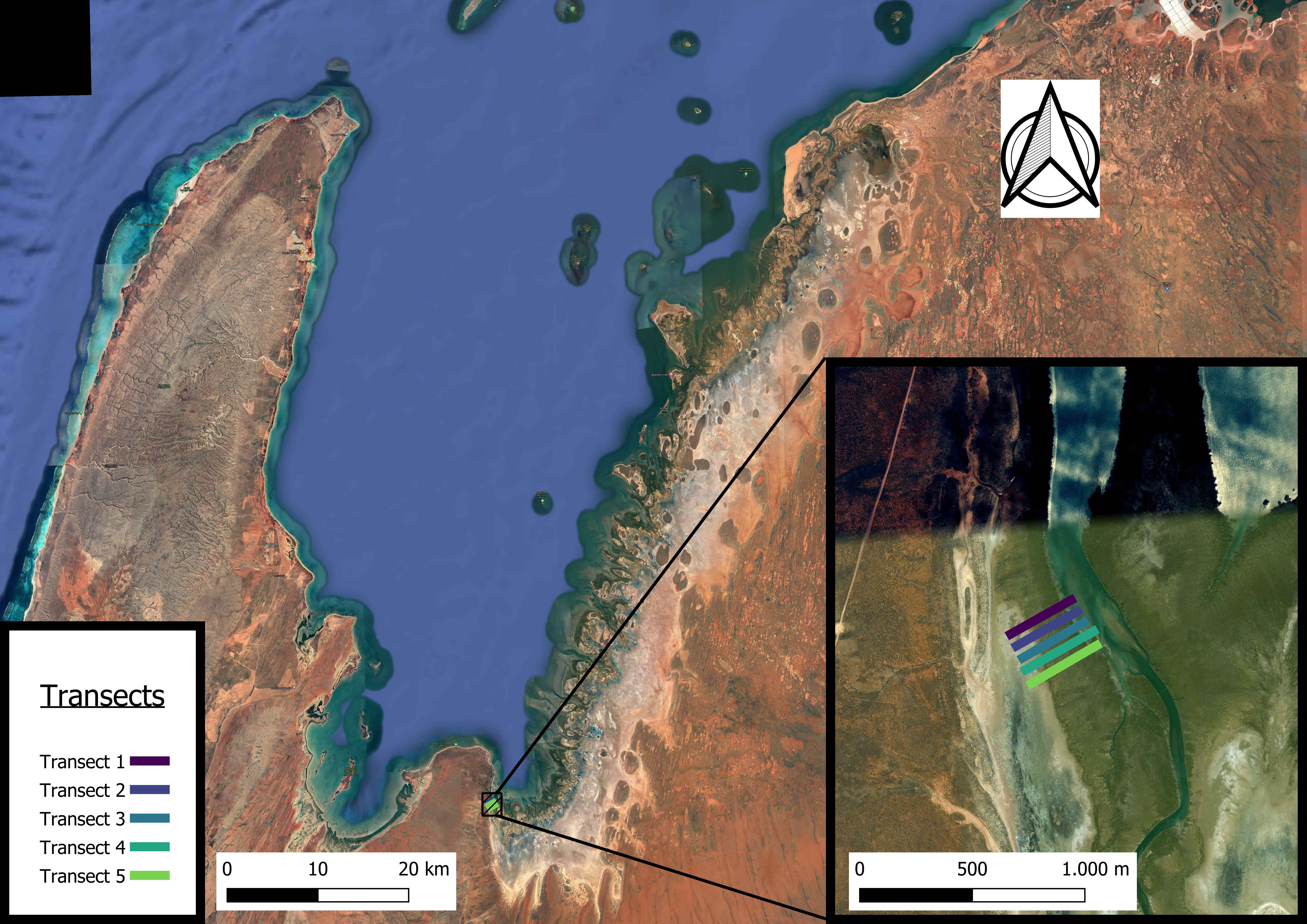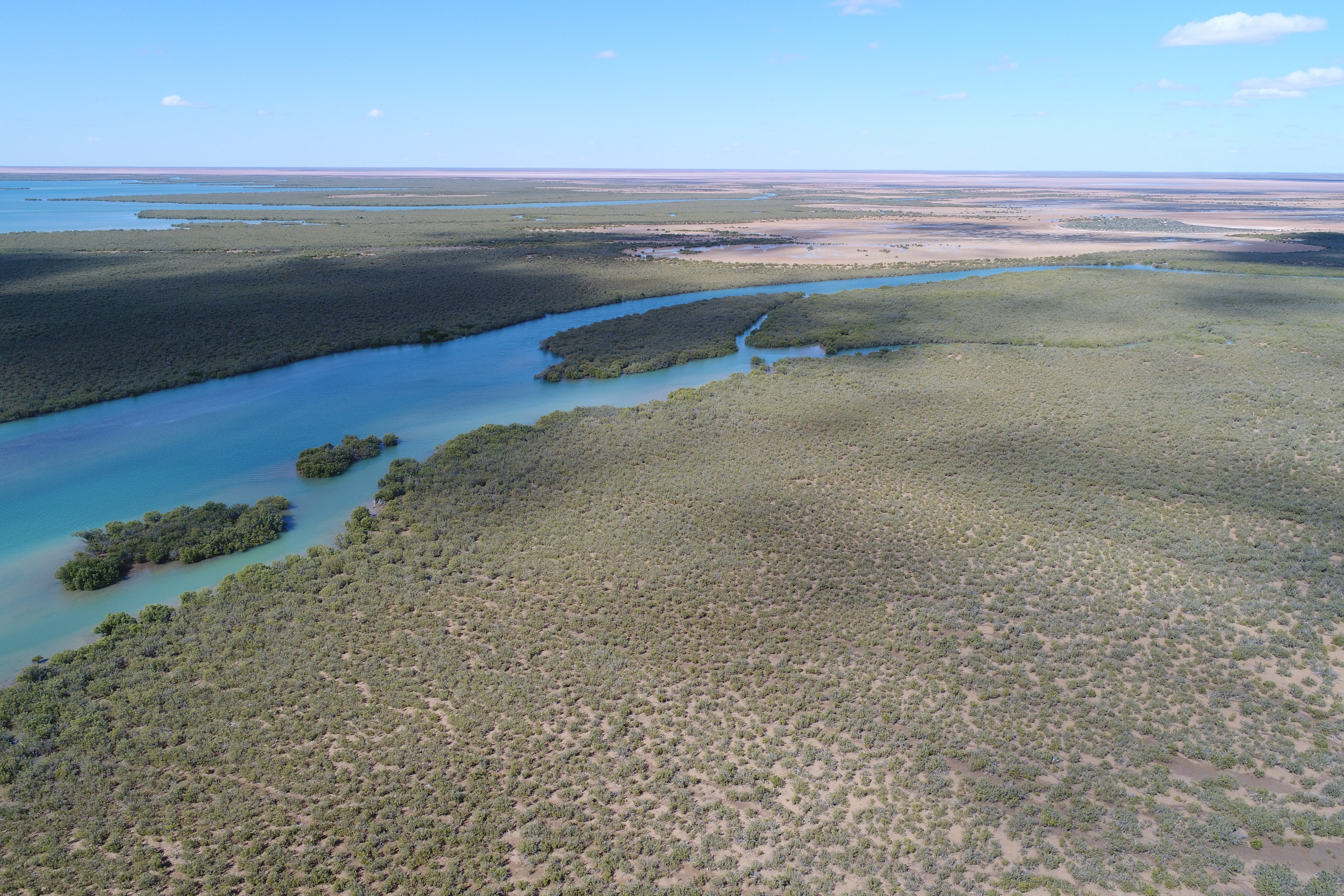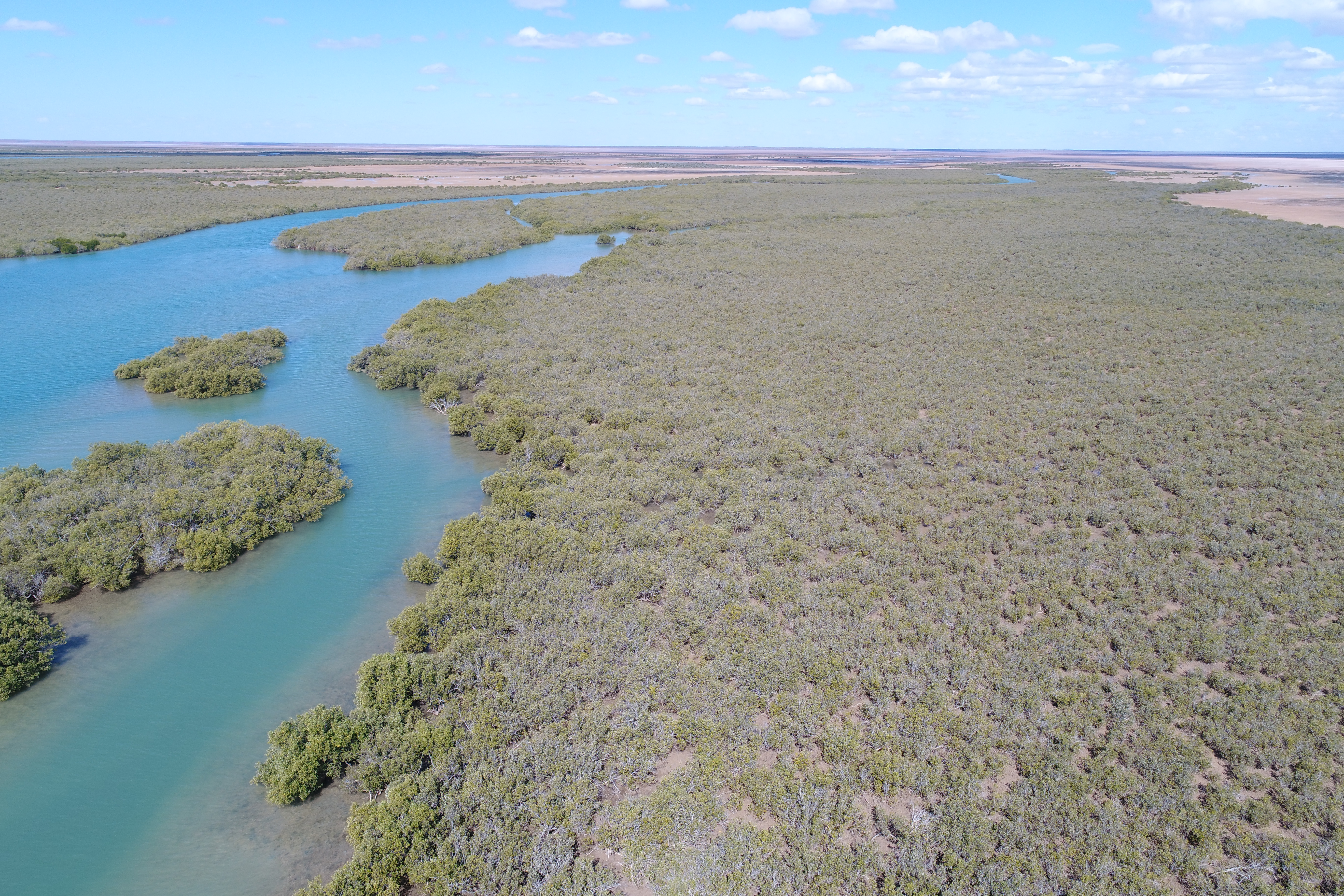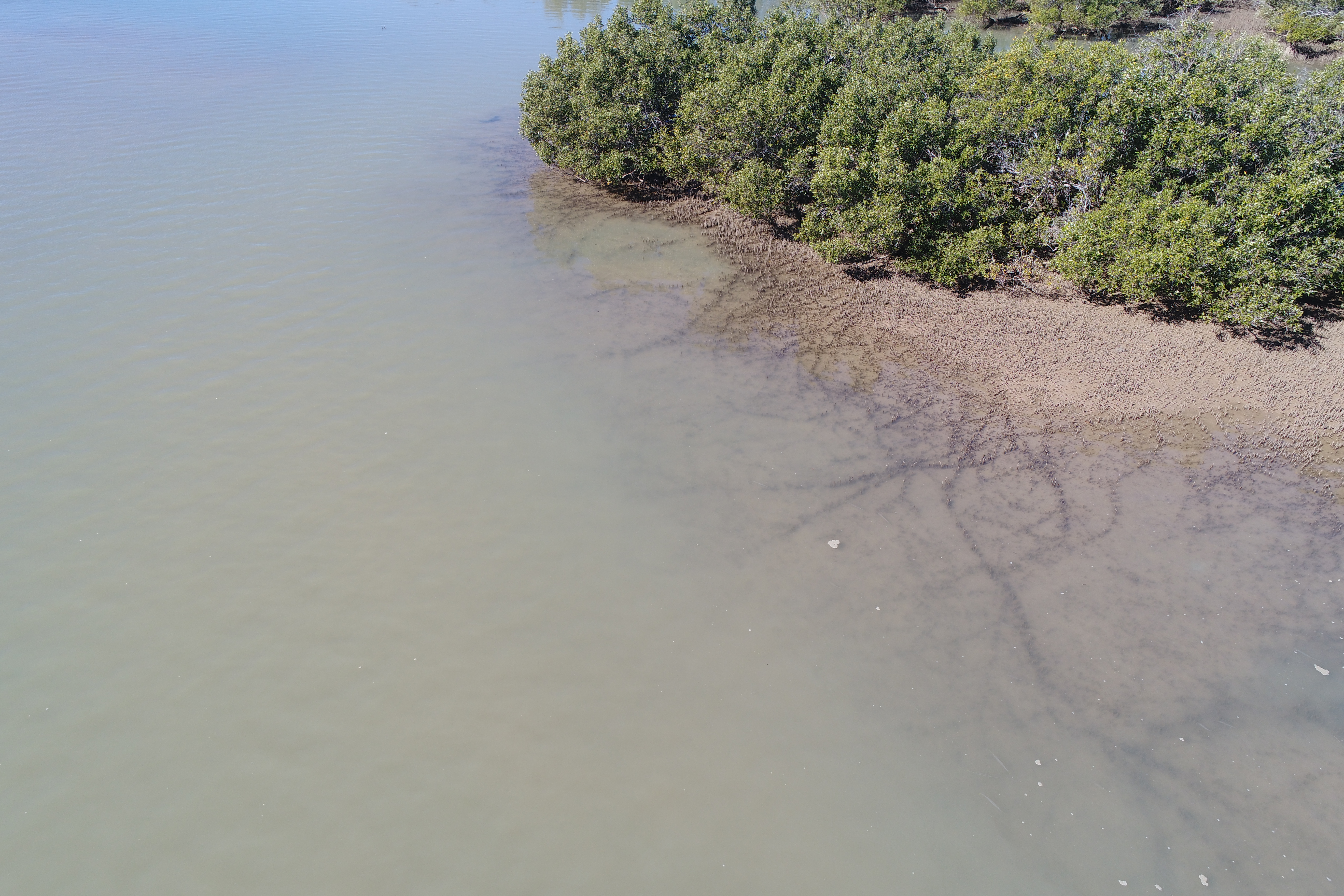Exmouth Gulf
The Exmouth Gulf is at the west coast of Australia in the state Western Australia (see also Figure 1). The bay is a semi-arid estuarine system with extensive coastal wetlands. The area is very important because of its great biodiversity, including migrating whales and seabirds. It is considered as one of the largest mostly anthropologically unchanged estuarine systems in the world. Therefore, tourism, recreation and commercial fishing play an important role in the area. Numerous mangroves grow on the approx. 2600 km² large headland, which consists of numerous inlets and is crossed by tidal creeks. With an average tidal range of about 1.8 meters, the mangroves are exposed to tidal flooding with salt water.

Figure 2 and 3 show the same section of the Exmouth Gulf from different perspectives. The system of rivers and smaller streams in the mangrove forests can be seen as well.


Figure 4 shows the root system formed by the gray mangroves. As an adaption to the anoxic conditions in the subsoil of the mangrove forests, the gray mangrove have pneumatophores. Those are aerial roots, which partly lie above the water surface Thereby, they allow plant respiration even at high tide.


